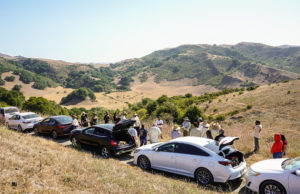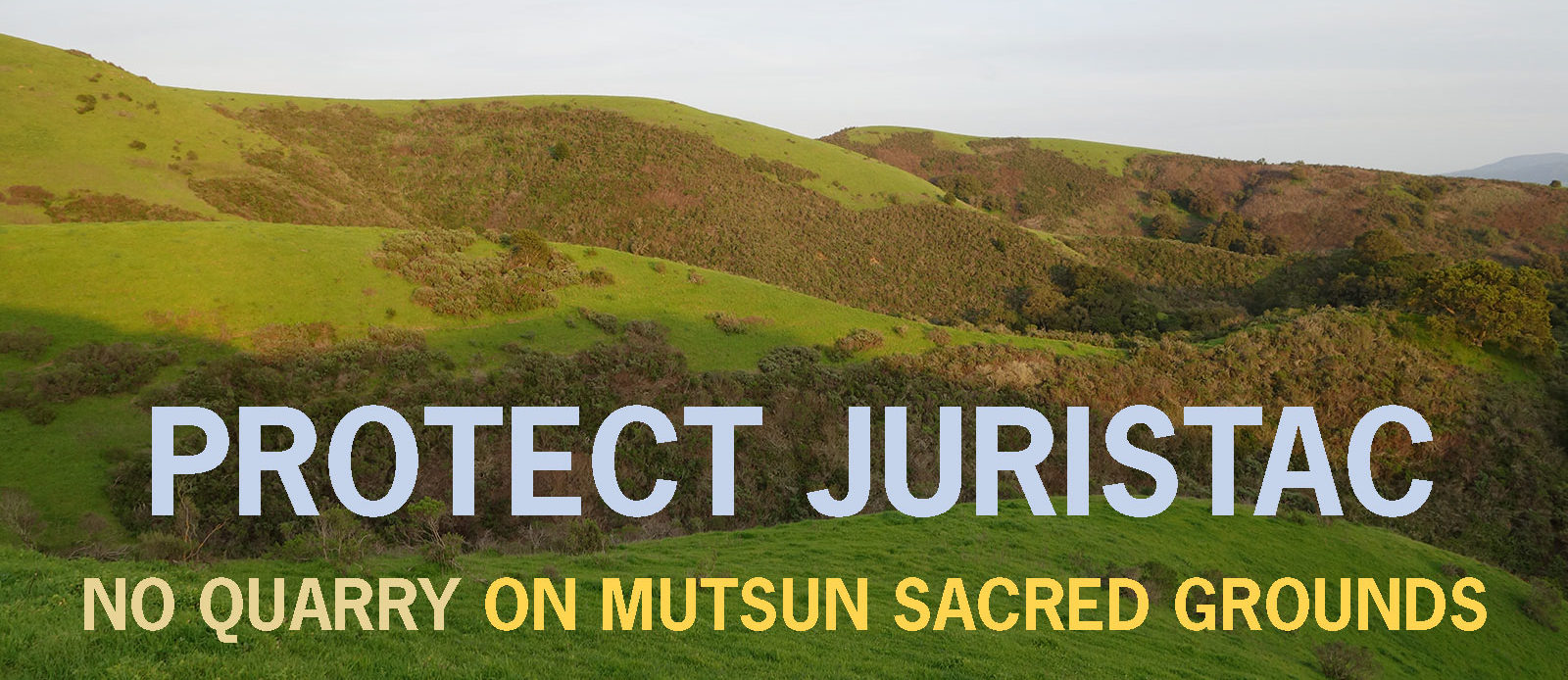New Analysis from the County Outlines Significant Impacts of Sand and Gravel Mining at Juristac
Gilroy, Calif. (July 22, 2022) — Tribal and environmental leaders today sounded the alarm about a proposal to develop an open-pit sand and gravel mine in Santa Clara County. The proposed development is on Juristac, lands that are sacred to the Amah Mutsun Tribal Band and vital for wildlife and the environmental health of the region. This intact landscape – also known as Sargent Ranch – is southwest of Gilroy.
Today, the County Planning Department released a draft analysis (called a draft Environmental Impact Report or EIR) examining the impact of the mine. Their analysis found that the project would cause significant and unavoidable impacts across at least six topics, including biological resources, cultural and tribal cultural resources, air quality, and transportation. This is the first of many steps that the County will take to understand the effects of the proposed project and decide if the current landowner – the San Diego-based Debt Acquisition Company of America – should be granted necessary permits for the mine.

“Juristac is the heart of Amah Mutsun spirituality and culture, and an open-pit sand and gravel mine would forever desecrate this sacred place,” said Valentin Lopez, Chairman of the Amah Mutsun Tribal Band. “This mining project represents a continuation of the destruction and domination that our Amah Mutsun people have suffered for generations. The cultural survival of our tribe is at stake.”
For thousands of years, the Amah Mutsun lived and held sacred ceremonies at Juristac. Most of these ceremonies came to an end when the Mutsun people were taken against their will to California’s missions, one of the darkest chapters in our state’s history. Today, a padlocked gate stands between the Amah Mutsun and their ancestral lands. They can only look from adjoining hills towards the place that is their spiritual center.
As part of the environmental review process, Santa Clara County commissioned an ethnographic study. The resulting confidential 285-page report provides a detailed review of archaeological, ethnographic and oral historical records, unequivocally documenting the immense historical, cultural and religious importance of Juristac to the Amah Mutsun Tribal Band. The ethnographic study identifies several Tribal Cultural Resources eligible for listing on the California Register of Historical Resources that would be significantly impacted by the proposed mining project. The draft EIR confirms that these impacts are unavoidable if the mine moves forward.
The draft EIR also reveals that the mine would impact more than 400 acres of grassland and oak woodland habitats, irreversibly altering the landscape at Juristac. The mine operators would dig giant, open pits into the hillsides and build a processing plant the size of 14 football fields. Aggregate processing would require over 80,000 gallons of water per day to be pumped from the ground. The erosion and runoff from the mining operations, roads, and waste piles could contaminate both Sargent and Tar Creeks, which flow to the Pajaro River, an already heavily impaired watershed.

“The proposed mine will forever destroy lands within one of the most critical wildlife linkages between the Santa Cruz, Diablo and Gabilan mountain ranges,” said Tiffany Yap, D.Env/PhD, senior scientist and wildlife connectivity advocate at the Center for Biological Diversity, a fact recognized by the draft EIR. “This entire property is a top conservation priority for the Bay Area and the state because it’s a biodiversity hotspot where wildlife can move between mountain ranges. For sensitive animals like pumas and California red-legged frogs, having room to roam prevents genetic isolation and local extinctions, especially as the climate crisis intensifies.”
Over the past two years there has been a groundswell of local opposition to the proposed mine. To date, more than 20,000 people have signed the Amah Mutsun Tribal Band’s petition opposing the mine. The City Councils of Morgan Hill, Santa Clara, Santa Cruz, and Sunnyvale have passed resolutions in support of protecting Juristac, as have tribal governments and political parties. In addition, a multitude of academic leaders, elected officials, faith leaders and civic organizations have authored strong letters expressing their opposition to mining at Juristac.
Next Steps
Now that Santa Clara County has released a Draft Environmental Impact Report for the proposed mine, the public has until September 26, 2022, to submit comments. Then, the County Planning Commission and Board of Supervisors are expected to consider the project and either approve or deny the permit for the mine. The Amah Mutsun Tribal Band and a coalition of allied organizations are planning for a public rally in San Jose during the second month of the comment period.
“This project benefits a Southern California debt acquisition company at the expense of the public. That’s why we need residents to contact County staff, Planning Commissioners and Supervisors to tell them: we don’t want a mine at Juristac,” added Alice Kaufman, Policy and Advocacy Director with Green Foothills. “In the year 2022, why are we still considering destroying critical wildlife habitat and sacred Indigenous land for an open-pit sand mine that nobody is asking for? Local folks and environmental groups defeated development efforts at Juristac twice in the last two decades. It’s time to rally again and protect these sacred, environmentally critical lands.”
To learn more and get involved in this effort, visit protectjuristac.org. The County also announced today that a meeting to receive public comments on the draft EIR will take place virtually on Thursday, August 25, at 1:30pm. Those who wish to receive further updates on the process directly from the County may sign up here.
About Green Foothills: The mission of Green Foothills is to protect open space, farmland, and natural resources in San Mateo and Santa Clara Counties for the benefit of all through advocacy, education, and grassroots action. The organization envisions a resilient region where wildlife thrives, everyone has natural beauty to enjoy, and communities live in balance with nature.
A PDF copy of this press release including contact information for interview requests is available at this link

